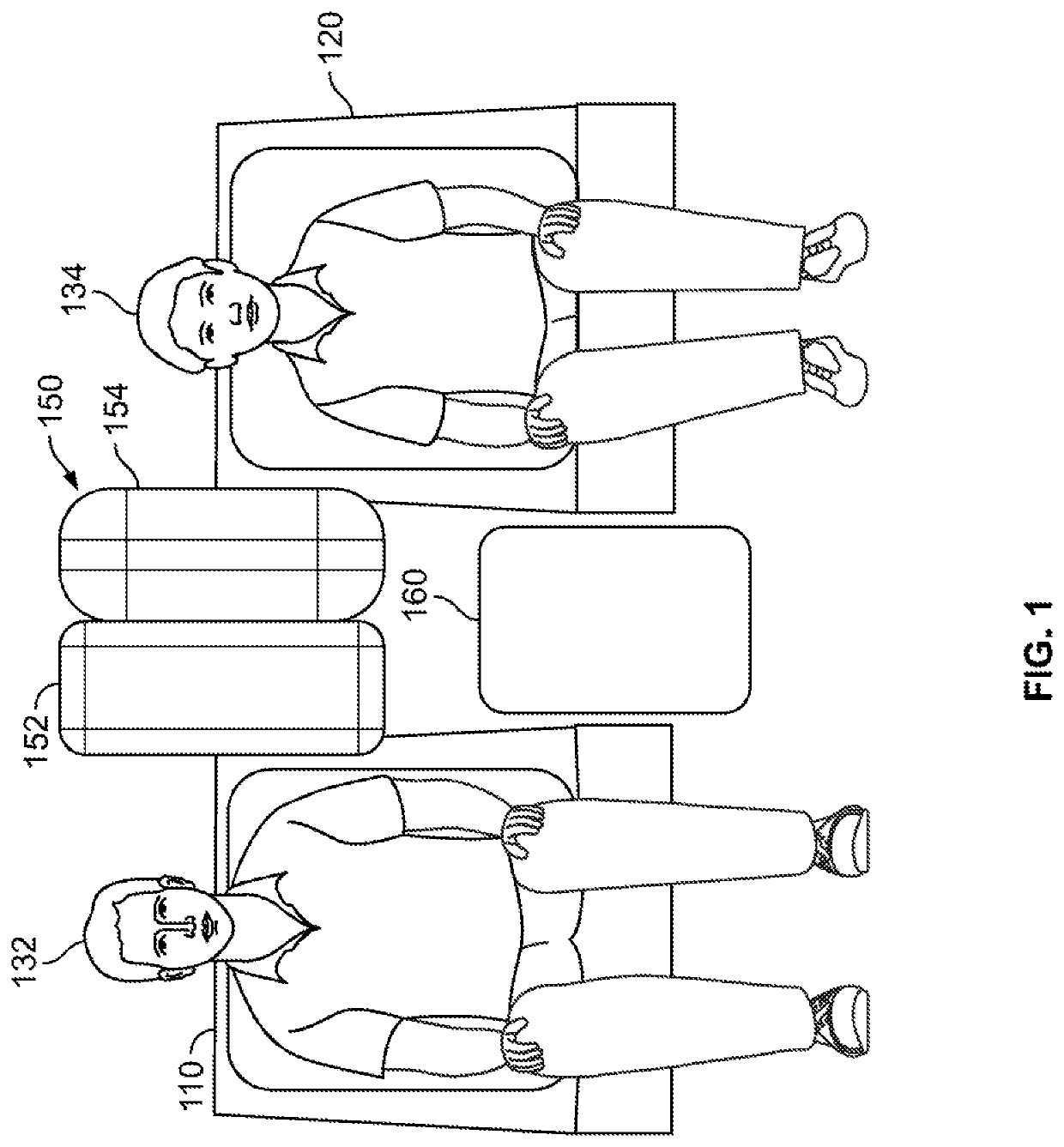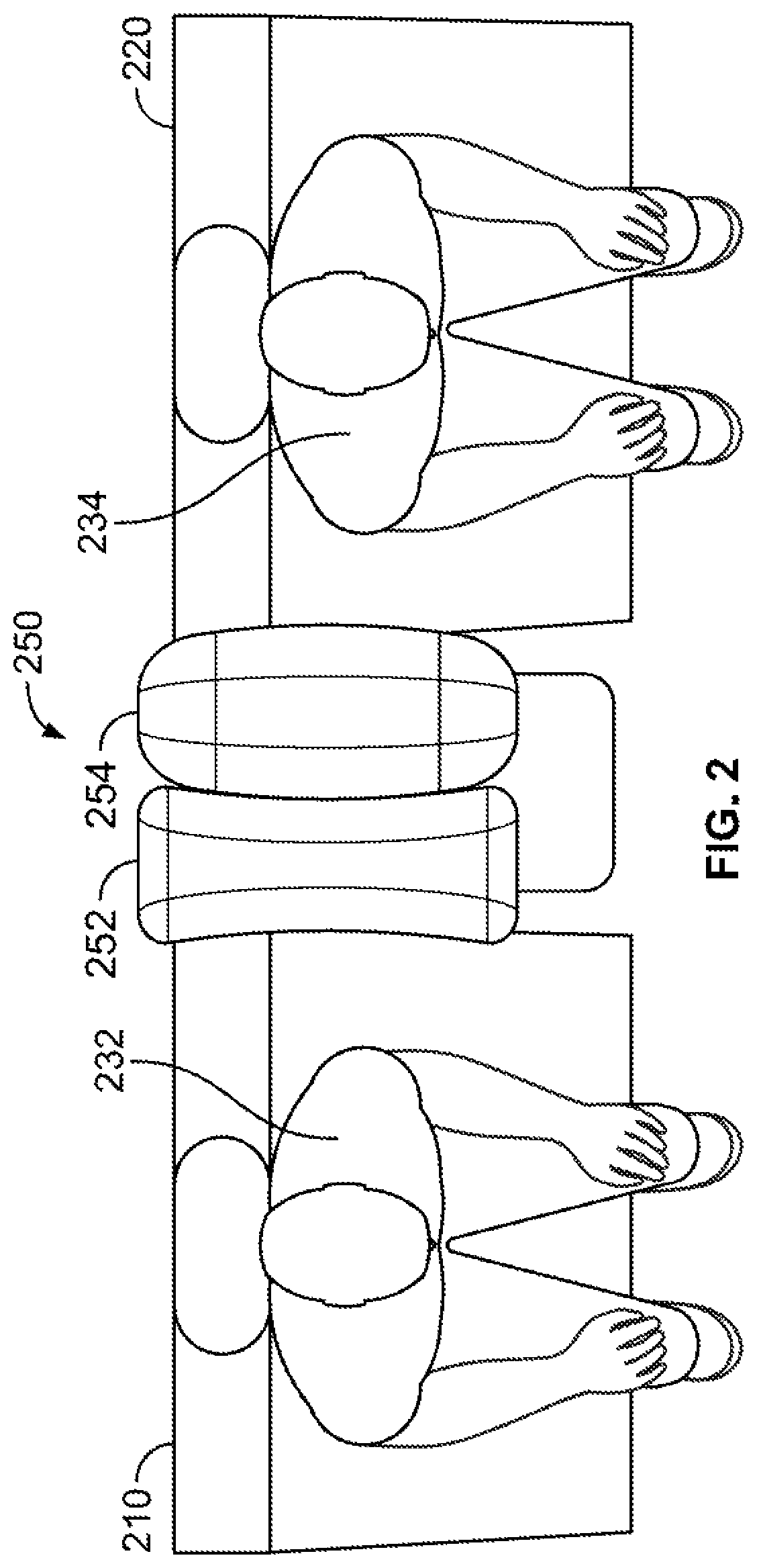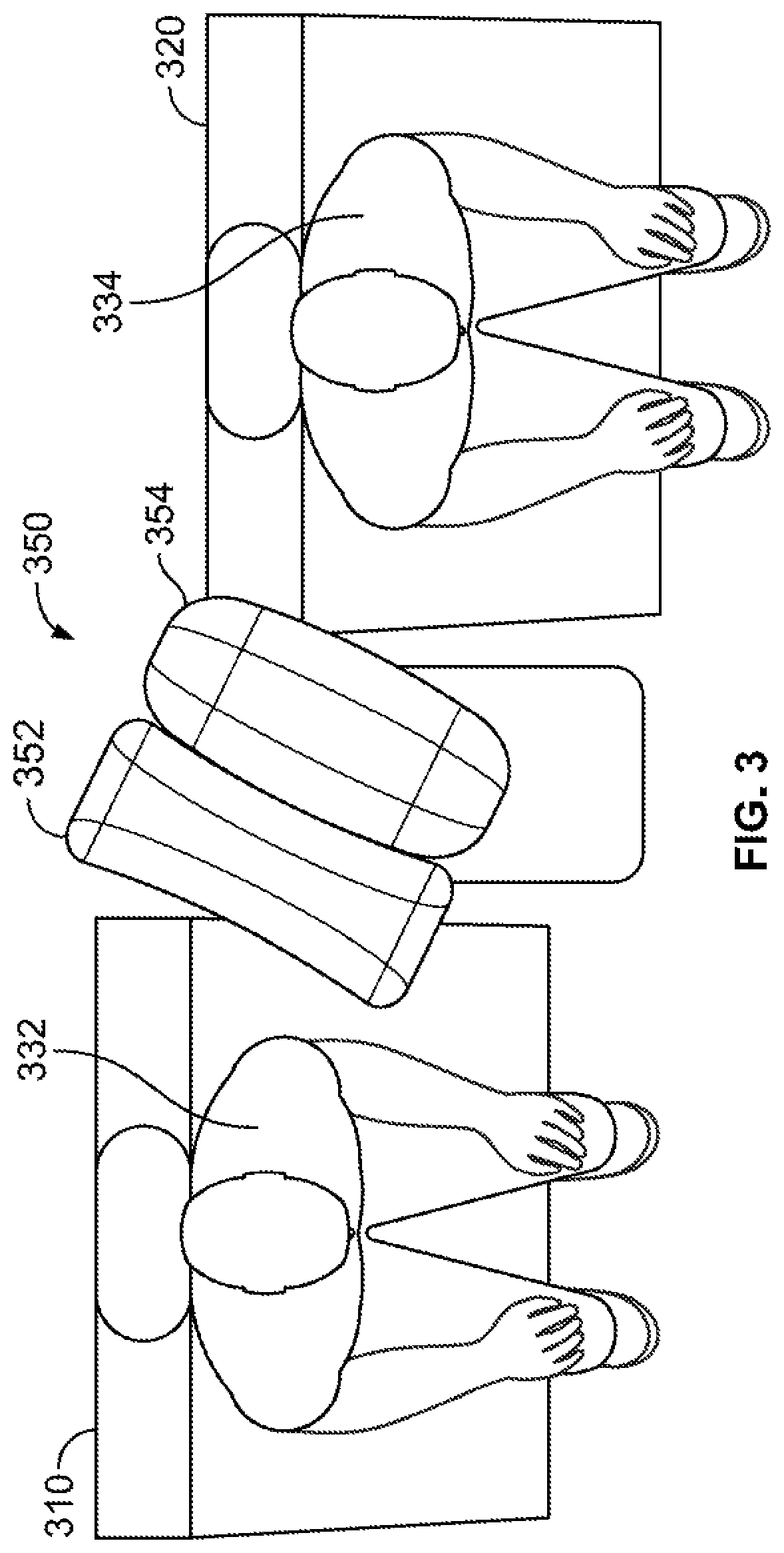Airbag arrangement for protection in a far-side vehicular crash
a technology for protecting airbags and vehicular crashes, which is applied to vehicular safety arrangments, pedestrian/occupant safety arrangements, vehicle components, etc., can solve the problems of supporting limitations of airbag inflating into an open space, such as an empty interior space, and achieve the effect of improving safety for occupants
- Summary
- Abstract
- Description
- Claims
- Application Information
AI Technical Summary
Benefits of technology
Problems solved by technology
Method used
Image
Examples
Embodiment Construction
[0026]An airbag arrangement is described herein for protecting occupants in a vehicle crash. In particular, the airbag arrangement is configured to provide improved protection for vehicle occupants involved in a far-side crash. A far-side crash is a type of crash that impacts a side of a vehicle. A far-side crash is relative to an occupant of a car. When a side crash occurs, the person on the near side of the crash is referred to as having a near-side crash impact. A person on the far side of the crash has a far-side crash impact. Each occupant in the vehicle may experience the same impact in a different manner. A person experiencing a near-side crash impact may benefit from different protection than a person experiencing a far-side crash impact. For example, when a side crash occurs, the person on the opposite side of the crash (the far-side impact) may move in a direction towards the other person (near-side crash impact) and may cause injury to the other person experiencing the ne...
PUM
 Login to View More
Login to View More Abstract
Description
Claims
Application Information
 Login to View More
Login to View More - R&D
- Intellectual Property
- Life Sciences
- Materials
- Tech Scout
- Unparalleled Data Quality
- Higher Quality Content
- 60% Fewer Hallucinations
Browse by: Latest US Patents, China's latest patents, Technical Efficacy Thesaurus, Application Domain, Technology Topic, Popular Technical Reports.
© 2025 PatSnap. All rights reserved.Legal|Privacy policy|Modern Slavery Act Transparency Statement|Sitemap|About US| Contact US: help@patsnap.com



